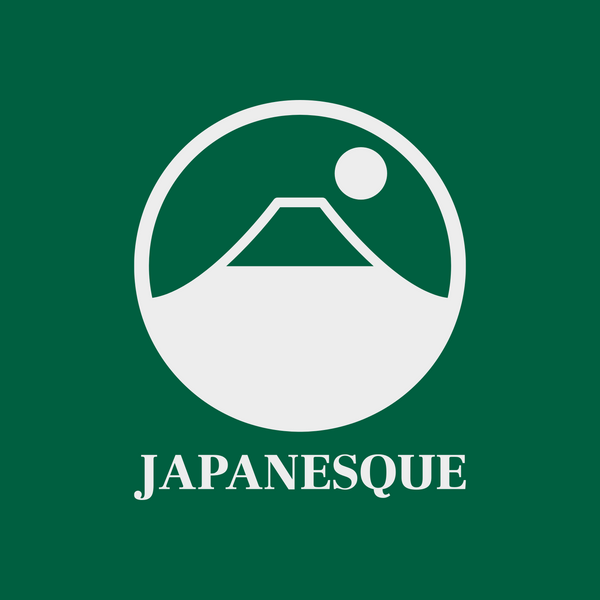-Learning from the tradition and evaluating to the future-
[Kinmori/Morikin] Technique born in Meiji Era
The Kinmori technique in which the pattern is raised with red iron or other materials and then painted with gold or platinum using a brush.It is a technique similar to "Maki-e" in lacquer art , which allows for three-dimensional expression.It was first started by Bizan Shimizu of Kanazawa in 1893, and was widely used in Kutani ware from the Meiji period to the Taisho period. Mr. Kingyoku the 2nd learned this technique from Mr. Tozan Yoshizaki and further evolved it into something unique.
<Decorative vase with Kinmori Design>

[Aochibu] Blue dots technique from Taisho Era
``Blue dots, white dots, and gold dots began around the first year of the Taisho era, and the style of densely packed fine dots coloring the ground color spread to the paintings of Nomi and Kanazawa.''
There is a description that it is a relatively new style of painting that started in the Taisho period.
Until now, the dots were hit in a random manner to fill the gaps in arabesques, etc., but by calculating the size and spacing of the dots and hitting them precisely, Mr. Kingyoku achieved a unique expression with a three-dimensional effect. did.
A special brush called an "Icchin" is first dipped in water, the water is blown out, and the brush is then used to apply dots of blue dye to the porcelain.
For blue paint, the end result looks a lot prettier when it's applied evenly.
<Free Cup with Aochibu Design>
<Free Cup with Shirochibu Design>
The style was introduced in 1913 by Shiro Mizuta, great craftsman in Kanazawa.
A style in which flowers representing the four seasons are painted on to cover the pot completely, resulting in a gorgeous and colorful design. This style in particular is representative of the gorgeousness and elegance of Kutani Ware.
The technique of Hanazume was also developed during the Taisho period, and it continues to be carried on today, while also being adapted to incorporate more modern styles.
<Incense burner with Hanazume Gold design>
[Sano Akae]
After studying the basics of ceramics at the Wakasugi kiln, Dōkai Saida continued his training in Kyoto and Imari. He eventually returned home to open his own kiln, the Sano kiln, which would become the cornerstone of Kutaniyaki in the Nomi region, where it continues to thrive to this day.
The Chawan festival (tea bowl festival) has been held every year since 1908.
Near Tōso shrine, where Dōkai himself is enshrined, is the studio of Buzan Fukushima, who carries on the tradition of Sano Akae style red ceramics art.

[Yuri Ginsai] Modern Kutani technique
Kazuo Nakata developed the unique technique involves cutting silver foil onto a base coated and fired, pasting it with glue, covering it with a transparent glaze, and firing it.
[Yuri Kinsai] Modern Kutani technique
Yuri Kinsai is a technique in which gold leaf is pasted onto an unglazed base, covered with a transparent glaze, and fired at low heat. If fired at high temperatures, the gold leaf will deform, so it must be fired at a low temperature of less than 1,000℃. Kinsai, which is decorated with gold leaf or gold paint, is generally applied on top of the glaze.The advantage of Yuri Kinsai is that the gold is protected by the glaze. Therefore, the gold leaf does not peel off like the overglaze color, making it highly durable. Furthermore, once the piece is completed, it does not get dirty and its color does not change easily.
Minori Yoshita (1932~), a Living National Treasure, is one of the leading experts in Yuri Kinsai in Modern Kutani.
[Yusai]
By using a technique called "Yusai", a glassy paint unique to Kutani ware, they can achieve this level of transparency even in pottery. This is a modern overlay technique that brings the charm of deep colors to a place of excitement. By firing Japanese paints at high temperatures, the paints overlap to create a stunning gradation. This technique, which was elevated to the level of art by the late Living National Treasure Yasokichi Tokuda III, is now inherited by many craftsmen and artists as a new traditional painting style for Kutani ware, and continues to explore new beauty every day.
<A work by Yasokichi Tokuda Ⅳ >
[Mori]
``Mori technique'', also known as ``Deco mori'', is a ``three-dimensional raised'' painting technique. For painting using the Mori technique, they use a unique tool called an icchin, rather than a brush, and squeezes creamy Mori paint from a piping bag. It is painted like "cake decoration".
This style of decoration is often used for ornaments. (Karazishi, Manekineko etc.)
<Sword Lion with "Mori">










